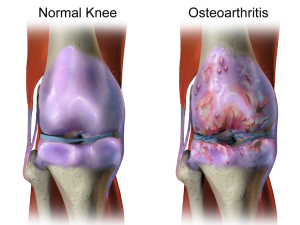Introduction
Living with knee arthritis can be challenging, but it doesn’t have to be daunting. With advancements in medical science and a plethora of treatment options available, individuals facing knee arthritis can feel confident in managing their condition and maintaining an active lifestyle. In this comprehensive guide, we delve into why knee arthritis treatments are not as risky as perceived and explore various strategies to alleviate symptoms and improve overall quality of life. Explore More About (Poliovirus in Waste Water)
Understanding Knee Arthritis
Before delving into treatments, it’s essential to understand the nature of knee arthritis. Arthritis is a common condition characterized by inflammation of the joints, leading to pain, stiffness, and decreased mobility. Knee arthritis specifically affects the knee joint, causing discomfort and hindering daily activities. The two most prevalent forms of knee arthritis are osteoarthritis and rheumatoid arthritis, each with its own set of symptoms and underlying causes.
Osteoarthritis: A Wear-and-Tear Affair
Osteoarthritis, often referred to as “wear-and-tear” arthritis, occurs when the protective cartilage cushioning the ends of bones wears down over time. This can result from aging, joint injury, obesity, or genetics. As the cartilage deteriorates, bones may rub against each other, leading to pain, swelling, and stiffness in the knee joint.

Rheumatoid Arthritis: An Autoimmune Challenge
On the other hand, rheumatoid arthritis is an autoimmune disorder where the body’s immune system mistakenly attacks the synovium, the lining of the membranes that surround the joints. This causes inflammation, which can eventually damage the cartilage and bone within the joint. Unlike osteoarthritis, rheumatoid arthritis can affect multiple joints and may also lead to systemic symptoms such as fatigue and fever.
Debunking the Myth of Risky Treatments
While knee arthritis can be debilitating, the fear of treatment-related risks often prevents individuals from seeking help. However, it’s crucial to recognize that advancements in medical technology and treatment protocols have significantly reduced the risks associated with managing knee arthritis. Here’s why knee arthritis treatments are safer and more effective than ever before:
Minimally Invasive Procedures
In recent years, there has been a shift towards minimally invasive procedures for knee arthritis treatment. These procedures, such as arthroscopy and joint injections, involve smaller incisions and less tissue disruption compared to traditional surgery. As a result, patients experience reduced pain, faster recovery times, and lower risks of complications.
Precision Medicine
Advancements in precision medicine have revolutionized the approach to treating knee arthritis. Personalized treatment plans tailored to each individual’s unique condition and medical history ensure optimal outcomes with minimal risk. From targeted drug therapies to customized rehabilitation programs, precision medicine offers a comprehensive and safe approach to managing knee arthritis.
Biological Therapies
Biological therapies, including platelet-rich plasma (PRP) injections and stem cell therapy, harness the body’s natural healing mechanisms to promote tissue regeneration and reduce inflammation. Unlike traditional medications, which may carry risks of side effects, biological therapies offer a safer alternative with minimal adverse reactions. These innovative treatments provide long-lasting relief from knee arthritis symptoms without compromising overall health.

Robotic-Assisted Surgery
In the realm of surgical interventions, robotic-assisted techniques have emerged as a game-changer for knee arthritis patients. Robotic systems enable surgeons to perform procedures with unparalleled precision and accuracy, minimizing the risk of errors and optimizing outcomes. Additionally, robotic-assisted surgery allows for smaller incisions, less tissue trauma, and faster recovery, making it a safer option for individuals with knee arthritis.
Empowering Patients with Knowledge
Beyond the realm of medical interventions, empowering patients with knowledge and resources is essential for managing knee arthritis effectively. Education about the condition, its causes, and available treatment options empowers individuals to make informed decisions about their health. Additionally, lifestyle modifications such as maintaining a healthy weight, staying physically active, and practicing joint-friendly exercises can significantly alleviate symptoms and improve overall well-being.
Knee Arthritis Treatments
| Treatment Type | Advantages | Disadvantages |
|---|---|---|
| Minimally Invasive Procedures | – Smaller incisions <br> – Faster recovery times <br> – Reduced risk of complications | – May not be suitable for all cases <br> – Limited effectiveness for severe arthritis |
| Precision Medicine | – Personalized treatment plans <br> – Optimal outcomes <br> – Minimal risk of adverse effects | – Cost may be prohibitive for some <br> – Requires specialized expertise |
| Biological Therapies | – Promotes tissue regeneration <br> – Reduced inflammation <br> – Long-lasting relief | – Limited availability <br> – Potential for allergic reactions |
| Robotic-Assisted Surgery | – Unparalleled precision <br> – Smaller incisions <br> – Faster recovery | – Cost may be higher <br> – Availability limited to specialized centers |
Conclusion
In conclusion, knee arthritis treatments are not as risky as commonly perceived. With advancements in medical technology, precision medicine, and minimally invasive procedures, individuals facing knee arthritis can feel confident in their ability to manage the condition and lead fulfilling lives. By debunking myths surrounding treatment risks and emphasizing the importance of personalized care and patient education, we can empower individuals to take control of their knee arthritis journey with confidence and optimism.




